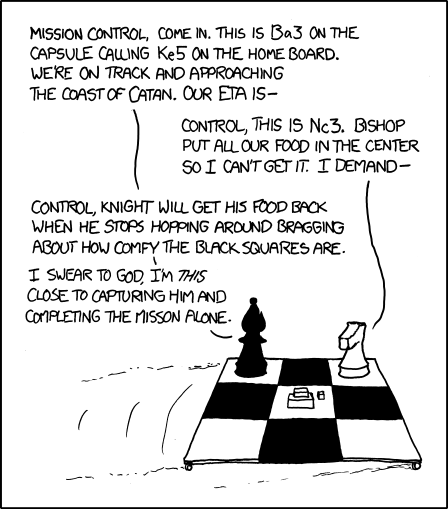Rook - straightforward
King - lazy
Queen - protective (for her better half  )
)
Knight - someone that overcomes the obstacles of life, liberated
Bishop - thinks out of the box, alternate ways
Pawns - weak, confident, united, sacrificing (most among other pieces)















What tyes of personality traits do you think pieces and pawns would have where they to be real people? I'm looking for both good and bad as well any other insights or opinions